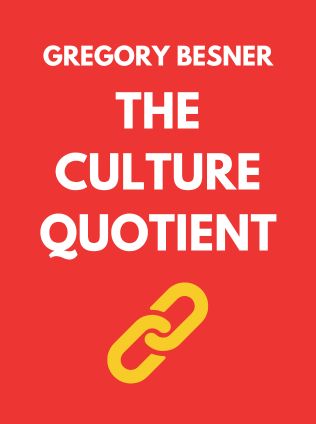
The Culture Quotient
Ten Dimensions of a High-Performance Culture
By Gregory Besner
Published 11/2020
About the Author
Greg Besner is the founder and vice chairman of CultureIQ, a global company dedicated to helping organizations create high-performance cultures. He established CultureIQ in 2013 and has since assisted over 1,000 organizations and millions of employees in strengthening their company cultures. Besner's expertise in the field has earned him recognition, including being ranked the eighth best CEO in the United States by USA Today in 2018 and named the EY Entrepreneur Of The Year® in New Jersey in 2003.
Main Idea
The Culture Quotient: Ten Dimensions of a High-Performance Culture by Greg Besner delves into the essential cultural qualities that help organizations thrive in a constantly changing environment. Besner identifies ten key dimensions that constitute a high-performance culture, providing a comprehensive framework for leaders to define, manage, and enhance their organizational culture. These dimensions are critical for achieving better financial results, increasing employee engagement, and improving talent acquisition and retention.
Table of Contents
- Introduction
- Mission and Value Alignment
- Communication
- Responsibility
- Agility
- Work Environment
- Innovation
- Wellness
- Performance Orientation
- Collaboration
- Support
Introduction
Besner starts by emphasizing the importance of company culture and employee engagement, citing Deloitte's research that highlights these as top challenges for organizations globally. He defines organizational culture as the behaviors, values, rituals, and language within a workplace, stressing its impact on employee relationships and work processes. A high-performance culture, according to Besner, drives superior results, including financial returns, customer ratings, and talent retention.
Mission and Value Alignment
Building a strong company culture begins with clear mission and value statements. These elements provide direction and purpose, aligning employees with the organization's goals. Besner underscores the importance of living these values daily and integrating them into all aspects of the employee lifecycle, from hiring to onboarding and ongoing development.
"A company's mission defines what we do and why we do it, while core values express how we do it." – Greg Besner
Slack's mission statement is to "make work life simpler, more pleasant, and more productive." This mission provides a clear and concise purpose for the company and its employees. Similarly, Ikea's values, which include togetherness, cost consciousness, and leading by example, guide the company's actions and decisions. These examples highlight the importance of aligning mission and values with everyday practices to create a cohesive and motivated workforce.
Communication
Effective communication is crucial yet challenging. Besner points out that communication issues often stem from a lack of a common vocabulary and ineffective information transfer processes. He advocates for creating a culture where clear, consistent communication is the norm, facilitating better understanding and collaboration among employees.
"Communication puts an individual’s role and projects into the context of the organization, inspiring workers to feel connected and motivated." – Greg Besner
Sign up for FREE and get access to 1,400+ books summaries.
You May Also Like
The Subtle Art of Not Giving a F*ck
A Counterintuitive Approach to Living a Good Life
By Mark MansonRich Dad Poor Dad
What the Rich Teach Their Kids About Money - That the Poor and Middle Class Do Not!
By Robert T. KiyosakiHow To Win Friends and Influence People
The All-Time Classic Manual Of People Skills
By Dale CarnegieQuiet: The Power of Introverts
The Power of Introverts in a World That Can't Stop Talking
By Susan Cain



















